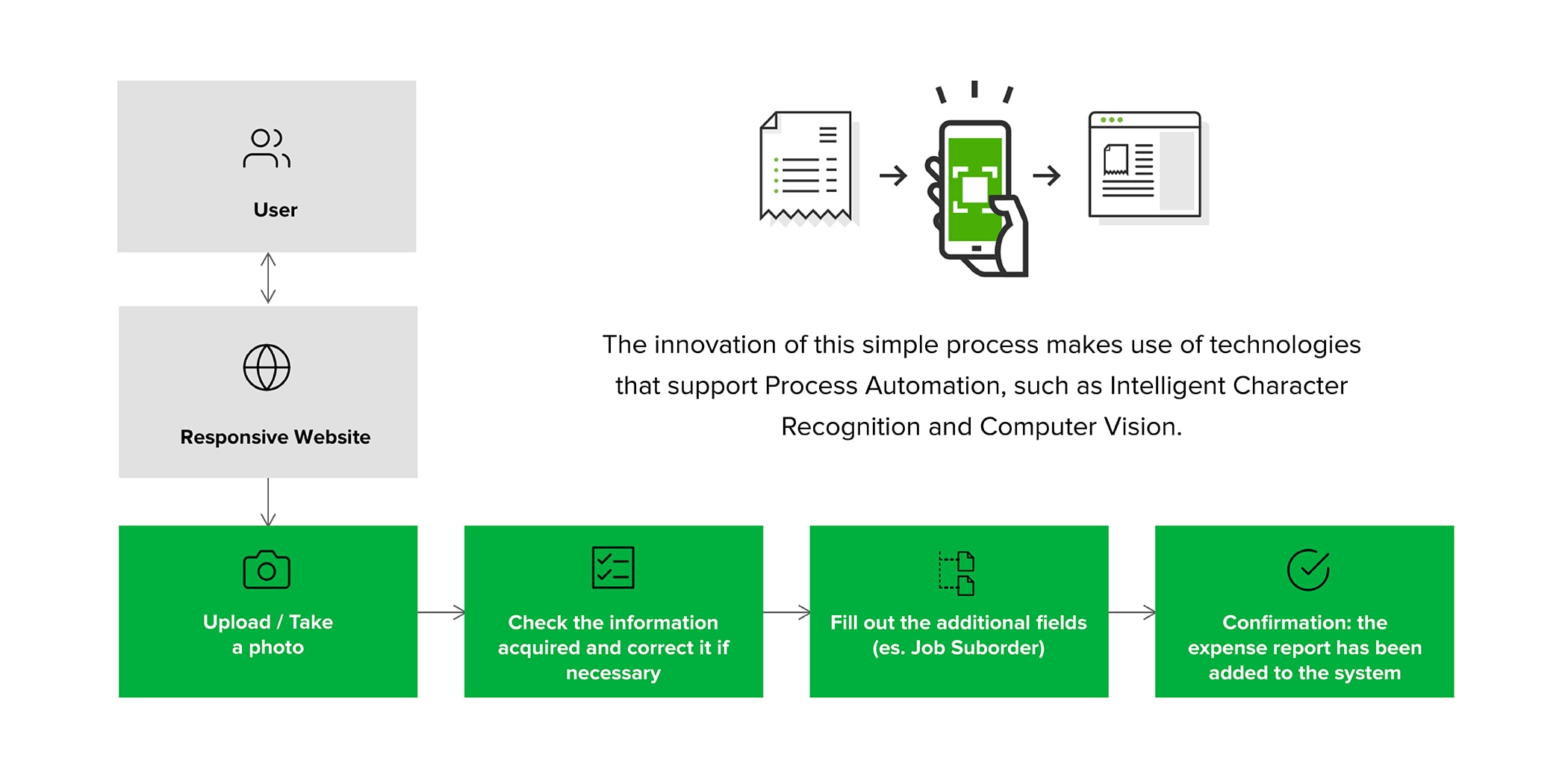,allowExpansion)
Automating Expense Reports with Intelligent Vision
With a photo, it is possible to speed up a seemingly simple process
From the documentary proof to the data entry: The classic process
Normally, employees have a receipt or some type of documentary proof that must be physically produced in order to process the data. The usual procedure involves entering the key information – for example, the date, the cost, and the expenditure category – into an application. It also involves the back office processing, the transfer to administration, and finally the payment.
erein lies the main and major problem: manual data entry and the subsequent back office verification are activities that can take a significant amount of time, if considered in their full complexity.
Now, all it takes is a photo

Image Preparation
The starting point is the simple photo of a receipt. The latter can be produced in a range of different conditions and qualities: the light could be anything but optimal, the background present or absent, the quality of the paper can vary. All conditions that hinder automatic processing. For this reason, the images are subjected to an initial pre-processing phase, which allows them to be received as well as possible by the Optical Character Recognition System. Noise reduction, de-speckling (or image cleaning), binarisation, edge smoothing, rotation and lighting correction are some of the techniques used to facilitate the Intelligent Character Recognition (ICR) extraction and to improve the recognition accuracy.
Data Extraction
Once cleaned, the images can be processed by the data extraction process. This process combines ICR text recognition technologies and Machine Learning techniques. First, the system identifies the blocks of text that make up the receipt and then analyses them to identify the relevant parts (e.g. dates, prices, etc.). Making use of Machine Learning algorithms, the extracted data is classified into the appropriate category (e.g. meal, transport) and made understandable and usable by the transactional expense report management system.
Process Automation and the Human Supervisor
Until recently, the human operator was the main actor in the data entry, verification, and processing activities. Thanks to the solution created, the only data that must be entered manually is that relating to the cost centre, or the sub-contract, when the latter cannot be inferred from the organisation or the final statements.
Moreover, the time required to enter expense reports is reduced by more than 85%, thus increasing the accuracy and significantly reducing the back office verification effort. The latter can instead focus their activities on certain figures or on specific expenditure categories, as well as on scenarios where the data entered by the user differs from that initially recognised by the system.
The automation of the process therefore leads to an evolution of the human role from operator to supervisor.